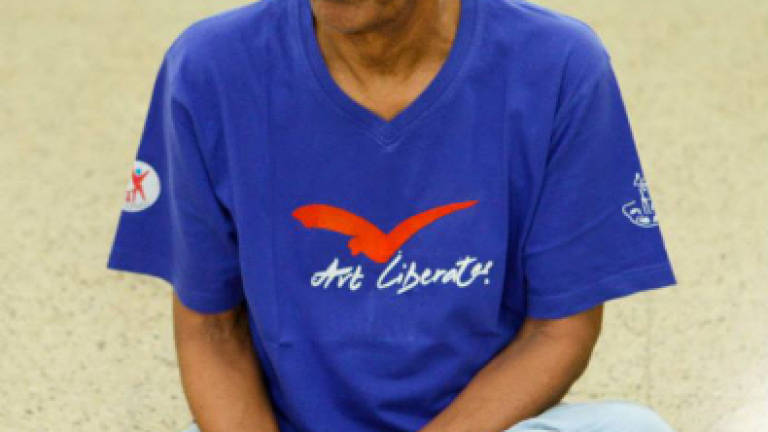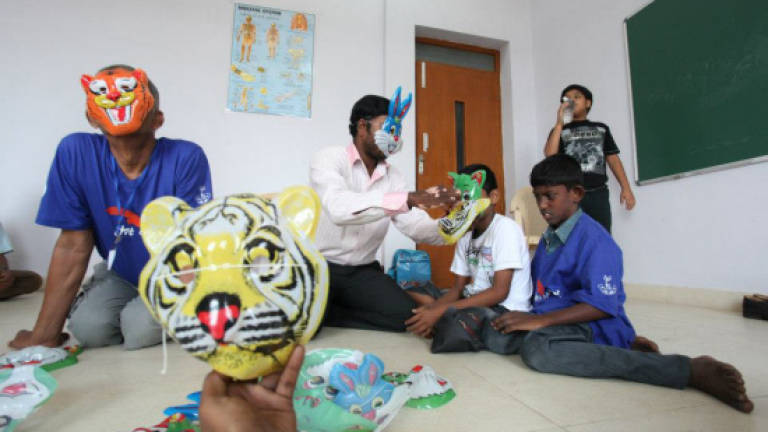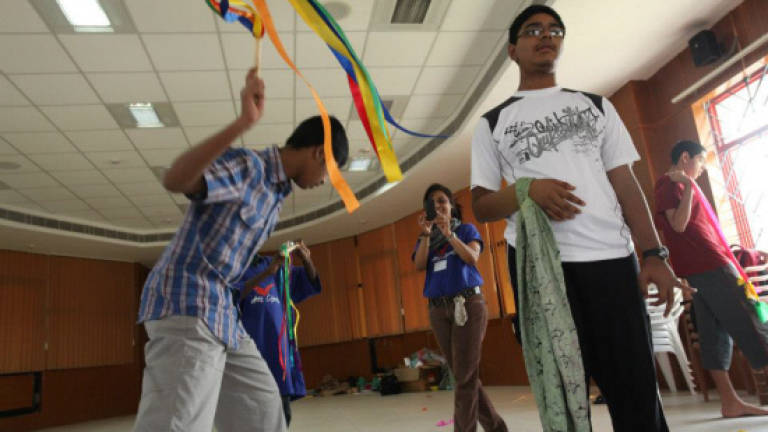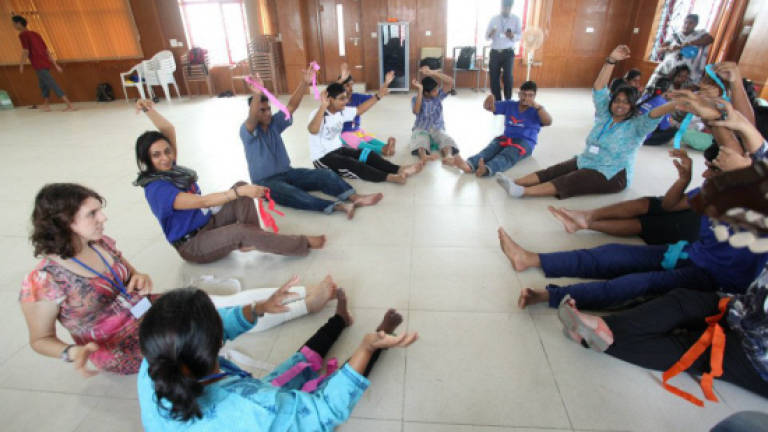Artistic motivation




INDIAN playwright, poet and director Dr Parasuram Ramamoorthi set up his theatre company, Velvi, in 1999 with the aim of preserving some of the Indian art forms.
But in 2003, he began working in the field of arts for autism, and expanded his goals.
Going with the slogan, 'Theatre Heals', he began to use his theatre company based in Madurai, India, to connect with children and young adults with autism spectrum disorder (ASD).
He has conducted countless drama workshops (top right and below right) for autistic children and adults in India, the United States, the United Kingdom, Korea, the United Arab Emirates and Saudi Arabia.
Nearly 5,000 children have benefited from his programme. These children have developed better social skills and better communication with their parents, siblings and friends.
"Drama is about connecting with yourself, others, the audience and the space," says 68-year-old Parasuram (below, far right) during a recent email interview.
"When we narrate a story, we narrate our experiences. Our perspective becomes entwined in the story that we want to tell.
"We help these people to step into someone else's shoes and indirectly, it helps them to understand what the other feels."
Parasuram says that role play and reversal of roles are gaining momentum with the autism community.
"Role playing helps let out emotions such as anger, fear, and aggression," says
Yet some are sceptical of his methods of using art to make a connection with autistic children.
Parasuram says: "They laugh at my workshops. [Yet] we cannot deny art is a social activity, connecting people with people, and in art, there is no right or wrong."
He adds: "Art opens a closet, brings fresh air and healing. The cleaning process begins when windows are thrown open and fresh air enters a room that has remained unopened for years.
"Art serves a similar function on the human body and mind."
He believes, in time, his sceptics will see the benefit of using art to help teach those with autism.
He has met with some success. For example, one participant has held an art exhibition all over India and Canada, while another is an award-winning musician.
One of his main methods in his programme is the use of theatre masks. He believes the colours in the masks are attention seeking and children with ASD will be immediately attracted towards them.
"One specific use I have found with the masks is that when children with ASD wear a mask, they tend to focus clearly and they can be trained to develop eye contact because the mask prevents them from looking in all directions," he says.
There are occasions he will ask the children to use an animal mask where they play a role of a tiger, a lion, a dog, a horse, or a cat.
"Masks excite children and they can induce creativity," he says. "It promotes creative story-telling among the children."
This will ultimately lead to some body movements too, like walking like a lion or trotting like a horse.
"We are introducing a fantasy world to children with ASD," he says. "This will largely ignite their imagination and help them to relate to things around them."
Playing with mask leads to the idea of painted masks.
"We can paint masks on the faces," he says "Children like to draw lines and circles by themselves on their faces and the faces of others.
"So a creative use of colours may be introduced to them."
He finds the first question that most parents ask when they learn their children have ASD is "when their children will be normal", and a few even see their children with ASD as a curse.
"ASD children have awesome minds," Parasuram insists.
"They have a mind that does not tell a lie."
He points out that they refuse to multi-task, unlike normal people, and this can be an advantage.
"When you focus on one thing, you will became absolutely great at it," he says.
Parasuram also says that there are neuroscientists and psychologists who also have their share of misconceptions.
"They think people in this spectrum lack imagination and lack empathy.
"We have organised poetry workshops for them and today, there are more than 200 of these young people who are writing poetry.
"Our participants does not merely act. They write scripts, design costumes, do the lighting and even run a cafeteria. They also usher the audience into the hall."